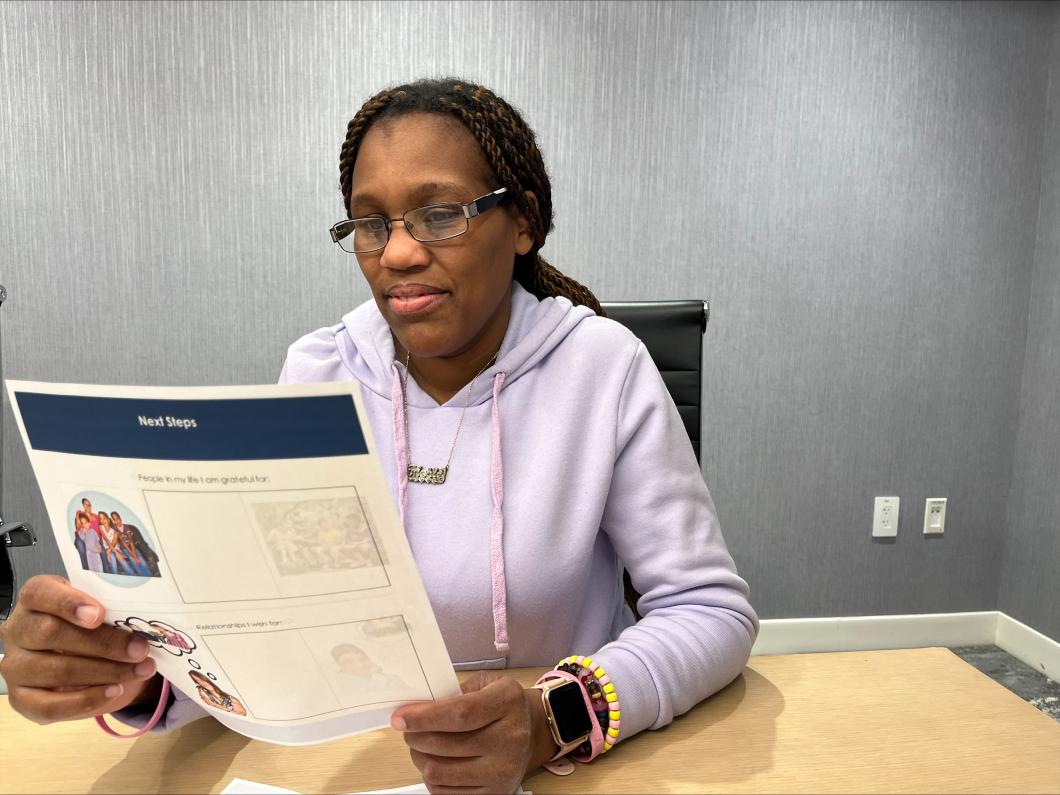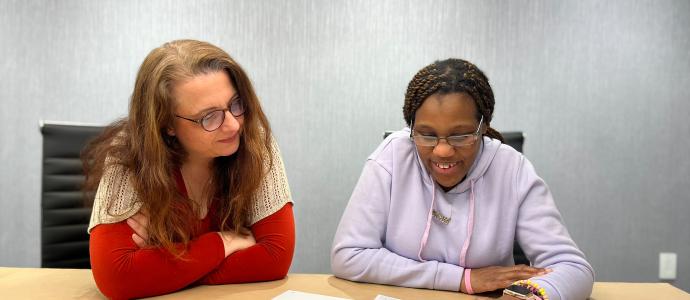Share
Lack of accessible information remains one of the biggest barriers that prevents people with intellectual and developmental disabilities (I/DD) from fully participating in society. Johanna Berglein, YAI’s Manager of International Affairs, is determined to knock that barrier down.
“On a global level, over the past 10 years there has been a push to make sure there’s more awareness about the barrier of inaccessible information,” said Berglein. “At YAI, we try to remove that barrier whenever possible.”
The current best practice for creating accessible information is called “Easy Read”—a document format that was popularized in the early 2000s in the United Kingdom. Easy Read offers pictures on the left side of the page and clear, short text on the right It also entails no more than four concepts on a single page, and the use of short, jargon-free sentences. An essential component of Easy Read is ensuring people with I/DD are involved with its creation.
“We began using Easy Read about three years ago, creating materials internally and for the UN,” Berglein explained. “People with intellectual disabilities need to be part of this, especially reviewing content."
To ensure accessibility, Berglein formed a seven-person review committee of people with I/DD. Their insights are crucial for crafting content truly understood by all.
“Organizations can approach YAI and say they want something to be made accessible and we can work with them on that,” said Berglein. “They can contract our review committee, because I know that can be a problem for companies—how do you find people with intellectual disabilities to review your materials?”

For Mosie Lubin, a review committee member, helping review materials is one way she can give back.
“I look at things and tell Johanna what’s right and wrong, and what she can fix,” said Lubin. “Some people might need help, and I like helping people.”
Thanks to a two-year grant from the Council on Developmental Disabilities (CDD), YAI is developing a training program to help teach state agencies and other organizations how to create materials using inclusive plain language. The training will help ensure professionals understand how to provide plain language information that is also inclusive of marginalized groups. The grant also entails the development of sample accessible information and plain language for people with I/DD throughout New York State.
Plain language isn't the same as Easy Read. It's a set of rules for government agencies to write clearly for everyone. Using shorter sentences, simpler words, and no jargon. It helps people with disabilities, language barriers, and even the 79% of people who just scan online. By removing complexity, plain language makes information clear and accessible for all.
“Obama signed the Plain Language Act in 2010, which basically says information needs to be accessible to the people who need to read it,” said Berglein. “So, with this grant through the CDD, what makes this project special is that we are creating plain language materials while also meeting accessibility needs for people with I/DD and other disabilities.”
To understand what information people with I/DD needed, YAI surveyed over 100 people with I/DD and family members across the state. Berglein followed up with focus groups to get a deeper understanding of the various needs.
"Our research revealed social inclusion as the top need," Berglein shared. "This could mean anything from fun activities to finding a job or a partner. That's why we created a workbook to help people express their social strengths, identify gaps they feel, and connect with support networks."
"Another clear need that came out of our assessment was the difficulty for parents to access the services they need," said Berglein. "Even with existing services, voicing concerns about quality or focus can be difficult, and navigating transitions is a challenge too. We're addressing this by creating resources to help families advocate for themselves and their loved ones."
To empower parents and caregivers, YAI is also creating a series of plain language fliers about how to identify key people, like service coordinators, who can help navigate I/DD systems, how to escalate problems, and generally how to advocate for yourself or your loved one.
For Berglein, the main goal of the grant is to help shift perspectives.
“We need professionals to ask, ‘What does my audience have to do with this information? What actions do they need to take?’ I’m hoping that the training can offer people a good overview so they feel like they can navigate the field of accessibility,” Berglein said.
“This work is good work,” said Lubin. “This job is important.”
To learn more about Easy Read and plain language at YAI, visit yai.org/easyread

